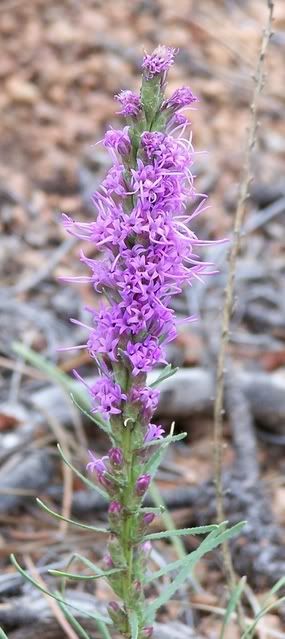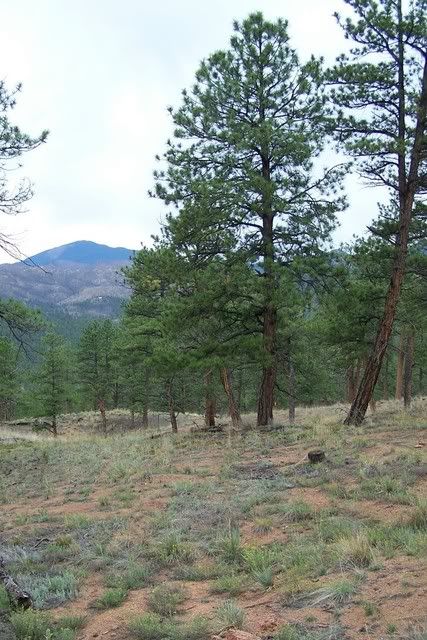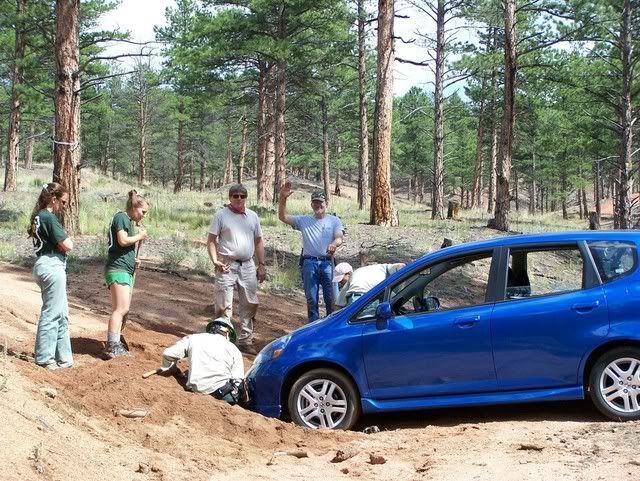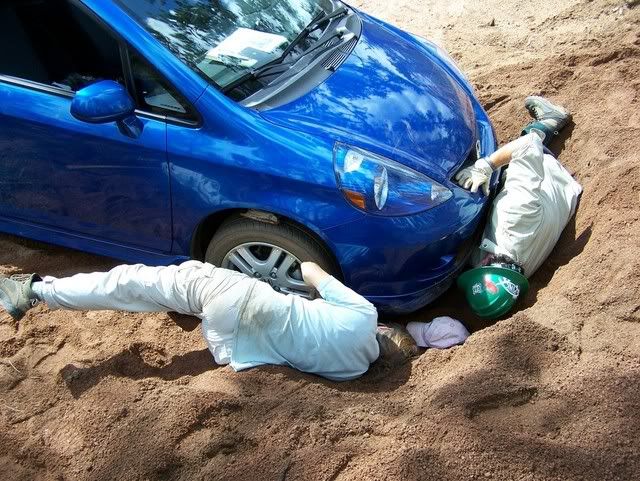After an orientation to go over what exactly we'd be looking for and recording and safety, we divided into 3 teams and headed off to our transects. Each team had 5 transects to survey. Each transect was 400m long and 10m wide. We walked each transect and counted skippers (both the Pawnee and the more common Comma), blooming Liatris stems (a favorite flower of the skipper) and in the case of our team, we also counted dead trees. Every 50m we stopped to record the number of flower stems and dead trees in the last 50m and to note the presence of blue gramma grass, which is the grass the skippers lay their eggs in.
 Gayfeather (Liatris punctata)
Gayfeather (Liatris punctata)We also noted the presence of other species of butterflies, mainly to show that the conditions were good for butterflies to be flying. Temperature, wind and cloud cover were also recorded periodically. The hiking was a bit tougher than what I usually do, since we had to follow straight lines up and down ridges.
 This photo is looking back down one of the transects - not many ridges showing in this one, but they were there!
This photo is looking back down one of the transects - not many ridges showing in this one, but they were there!As we headed to our last transect, we got a radio call from one of the other teams that their car was stuck. In case you were wondering, Honda Fits probably are not good off-road vehicles. We hiked back to the park to head over in one of the Forest Service trucks to help. He had tried to turn around and got the front end high-centered on some soft sand. The front end was being lifted up enough that the front wheels had no traction whatsoever. They had been digging with sticks, but we had shovels. It still took quite a bit of digging before we could push them out.


We went back and surveyed our last transect before heading into town for some ice cream. I have a day of professional leave next week to go back up for another day of surveying. Next week's surveys are on more rugged terrain in the burn area. Hopefully, next week I'll see some Pawnee skippers.

No comments:
Post a Comment